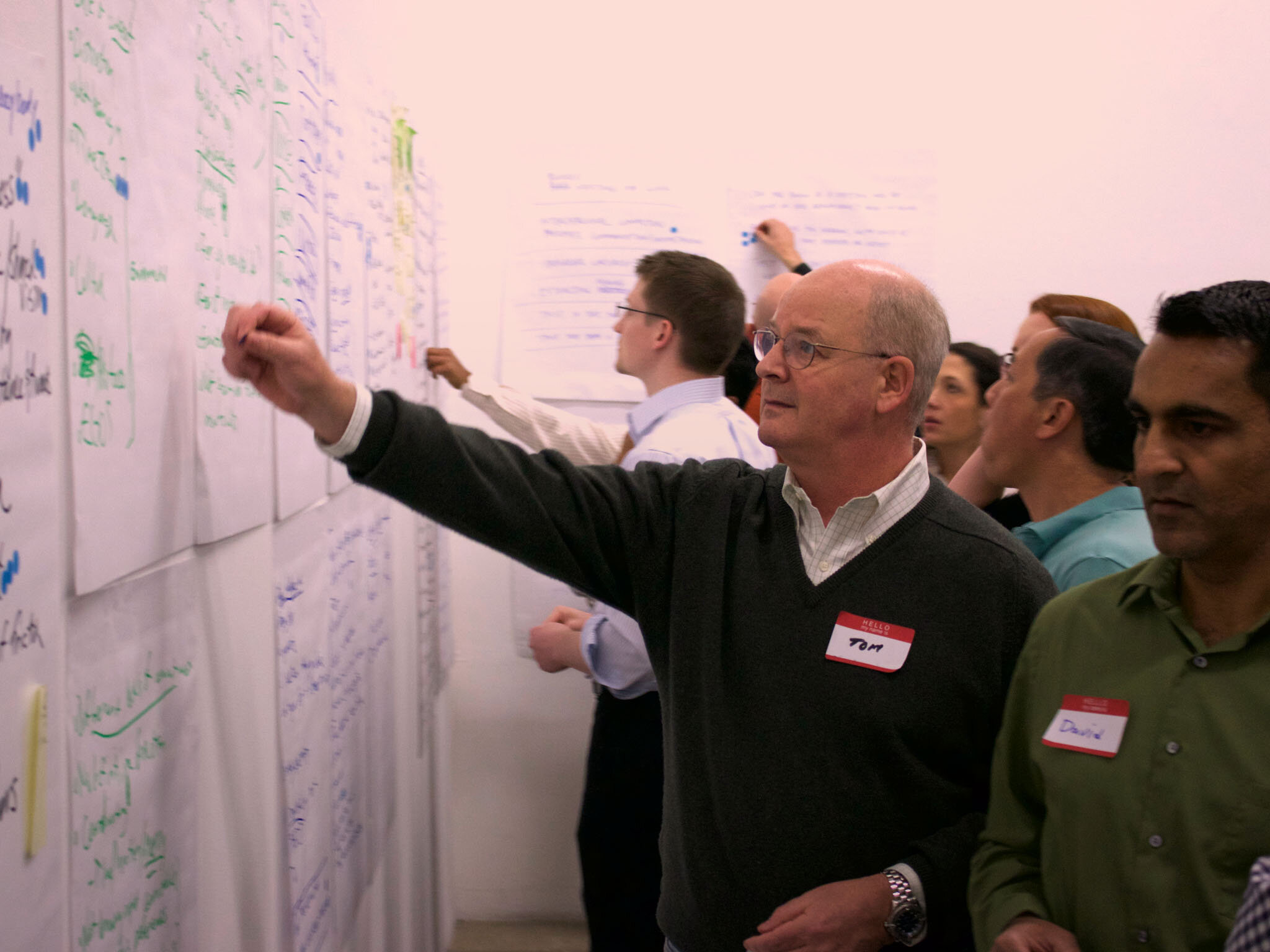
Citrix
The Citrix project was really an exercise in helping shake people out of their comfort zone. The company—makers of GoToMeeting and a whole host of communication and collaboration tools for the SMB—had seen their business start to falter. Having nailed one big, complicated idea—virtual conferencing with screensharing and video—back in the day, they’d watched as a bunch of competitors came out of the woodwork and did for free what they charged a premium for. It was time to instigate a movement to out-innovate themselves from within—but they’d lost touch with what the big vision was. The big idea was hazy at best. So we worked (first with a core team of six, then with a group of 30 from all across the org) to find out what consumers really wanted and needed. Turns out, people don’t really want more tools, more technology, or more knobs. They just want to feel good about themselves, work well with others, and get shit done. They just want stuff that actually works—and helps them be understood. We helped the folks inside Citrix remember that and agree on some simple, shareable rules to move forward with as a team.
So, essentially an exercise in noise reduction…

The Problem
—
We’ve got too comfortable and we’ve lost our sense of purpose.
When one of our former Intuit clients, Chris Battles, found his way to Citrix—heading what was then called the ‘Communication Cloud’ (basically GoToMeeting, GoToWebinar and all of their other virtual conferencing and collaboration tools at the core of their consumer business)—our bat-phone started ringing. Even though he was only a month in, he knew there was a potentially heavy lift ahead. The company had just wrapped up a lengthy engagement with McKinsey and were still struggling to make sense of the massive tome of recommendations they’d ended up with. Chris’s new team too had been wrestling (since long before his arrival) with homing in on a BHAG for the division.
The company had always pushed the edge of what’s possible, technically. And they’d built an amazing product that solved one problem brilliantly. For a long time, they basically owned the market and the money came rolling in. But so did the pressure to evolve. In response, they’d added feature after feature and flavor after flavor until things got super complicated—siloing teams, creating products that didn’t work well together, and sitting back as their space suddenly got crowded and commoditized. Risk aversion was rampant. Engineering moved surprisingly slowly. M&A was a bit scattershot. And marketshare was dwindling. The company had forgotten its original vision, making decision-making increasingly difficult. As a new leader with a mandate for reinvention, Chris was chomping at the bit to re-energize his team and reignite their entrepreneurial spirit. The big question was: Why, where, and how will we reclaim our role as innovators?

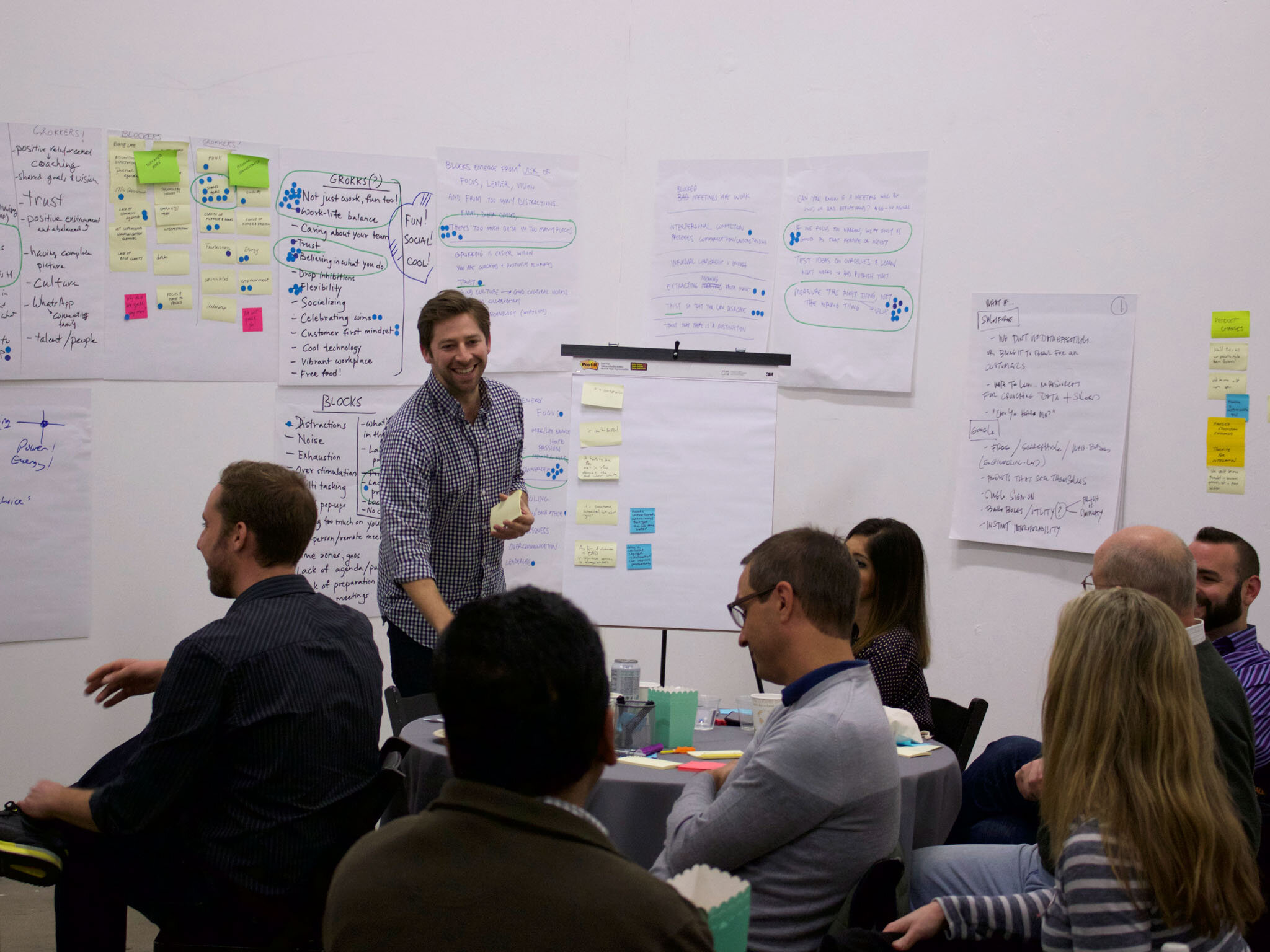
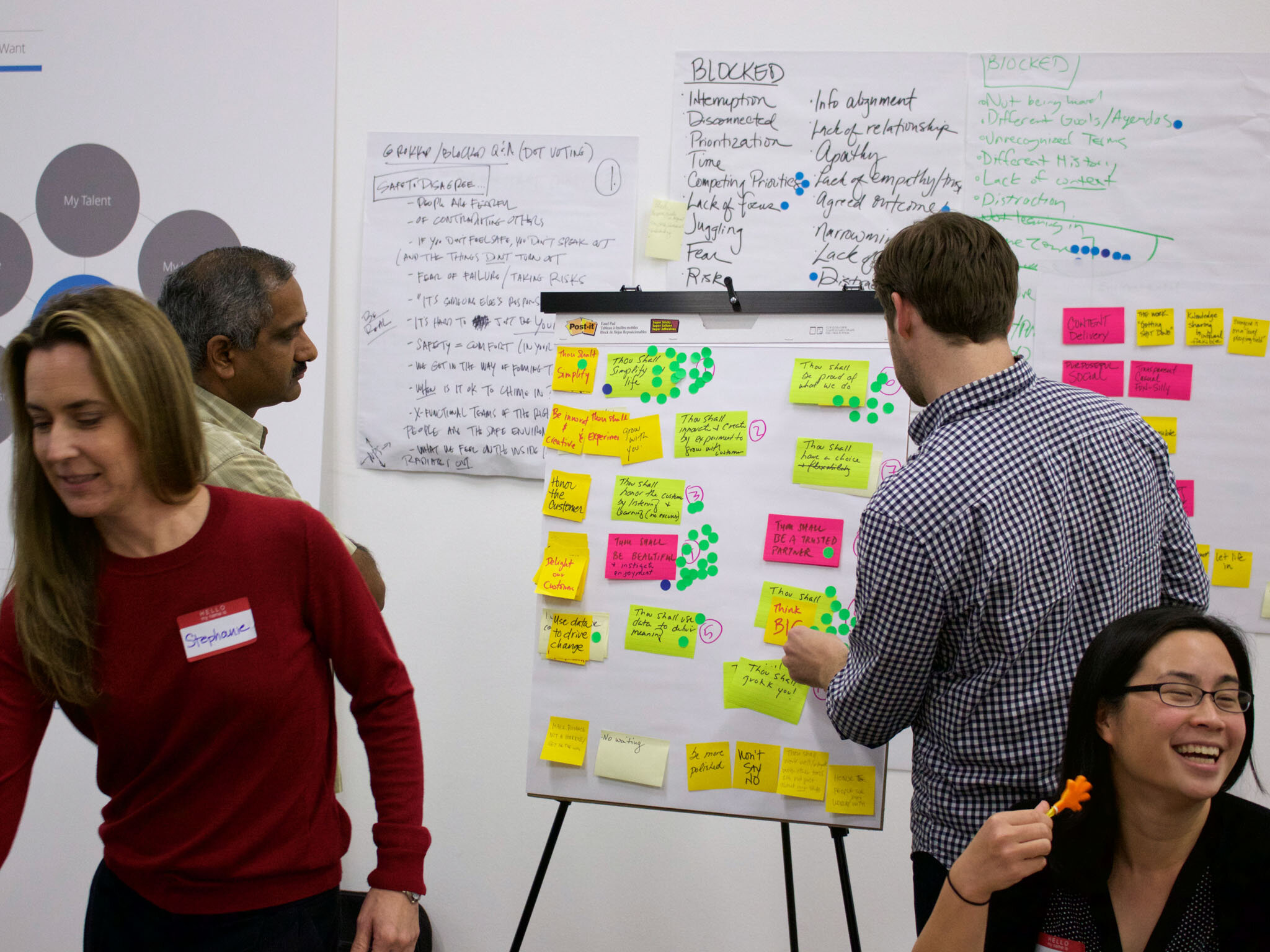

The Research
—
Things were kinda stuck. But it wasn’t too late. The company had already started to disrupt itself.
Citrix was too big and too politically fraught to tackle this alone. So we recruited a crack team of six people from the PD, engineering, research, marketing, customer support, and business development groups—and got busy interviewing 20+ people across the organization. What we heard held together alarmingly well. People were complacent but antsy. They saw tons of anklebiters entering the space and doing for free what Citrix charged a premium for. They sat by as all manner of strange little start-ups were gobbled up by the M&A team…only to be spit back out again. Podio for example, which seemed like a possible savior, proved so difficult to use internally that teams gave up trying to figure out how to integrate it with G2M.
But there was still a movement afoot to shake things up. Just before we arrived on the scene, a handful of former Podio engineers set up a skunkworks project to build a free, web-based version of GoToMeeting—entirely from scratch. In under four months, it was live and it was awesome—proving that it wasn’t too late to begin disruption from within. Problem was, to what end? And what to build? Without a clear purpose—and a vivid sense of what consumers actually wanted and needed—every decision was socked in a fog of war. So, we set about training our internal team on our particular approach to doing qualitative research—and buddied up with them for a score of in-person interviews with a range of small to medium businesses all over the country.
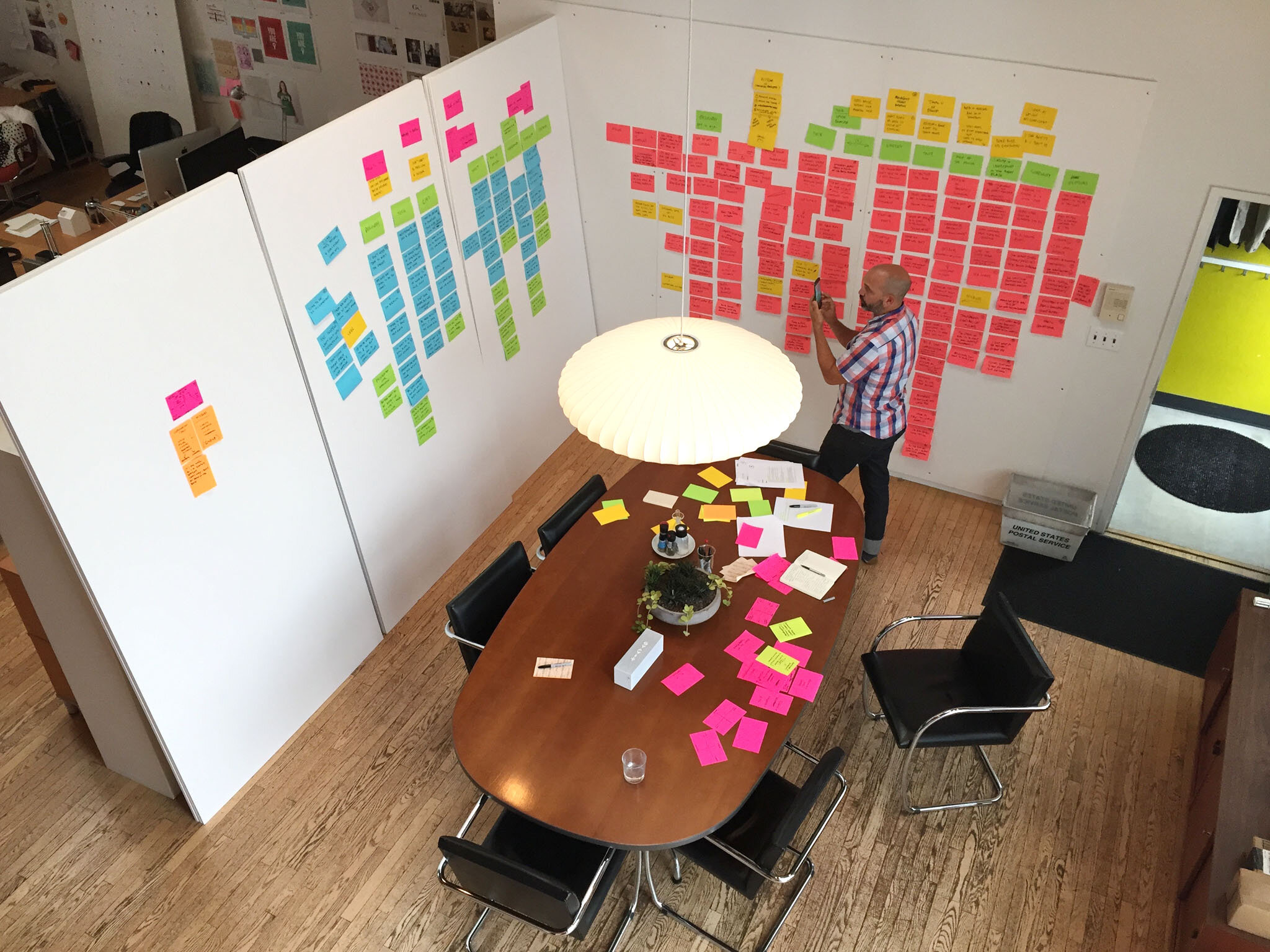
The Insight
—
People just want to be understood.
Talking to business folks about GoToMeeting was super-fascinating. Especially when we stopped talking about GoToMeeting. Because Citrix’s products are just a few in a growing arsenal that a typical business user must wrangle. Hangouts, Skype, Yelp, Slack, HipChat, Asana—the list goes on, and grows every day. They all promise a collaborative nirvana, and they all pretty much suck at delivering it. The tools however, were a red herring. There was a bigger challenge that was taking an enormous emotional toll on people’s lives: meetings. People universally hate meetings. This is particularly tough for managers, whose entire job it is to meet. Now add video conferencing—can you see me? I can’t hear you! Unmute yourself! Go to audio settings in the system pull down! It was in this landscape that we began seeing the way forward. We discovered an incredible productivity hack that was taking the business world by storm—five minute face-to-face hallway chats.
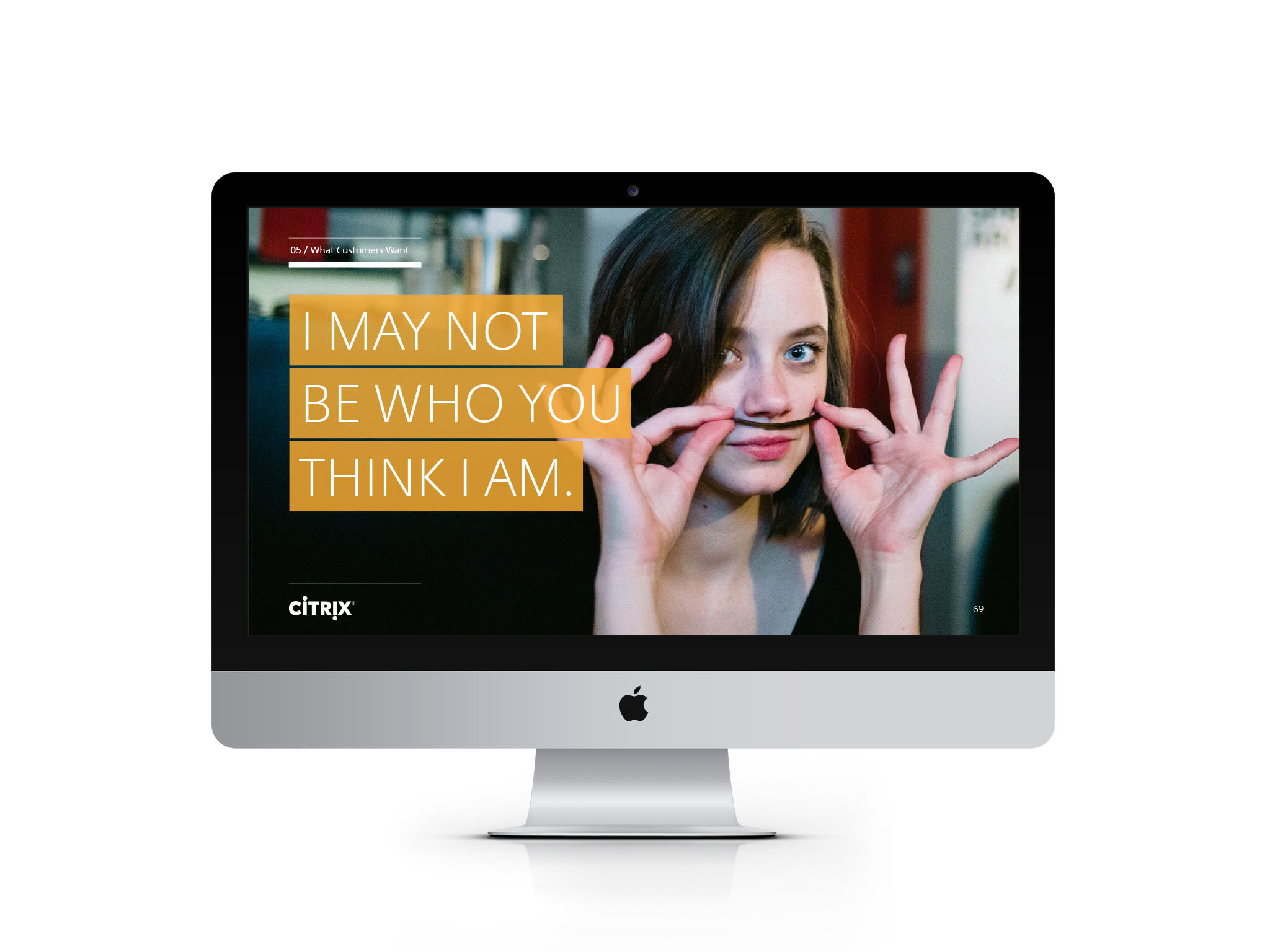
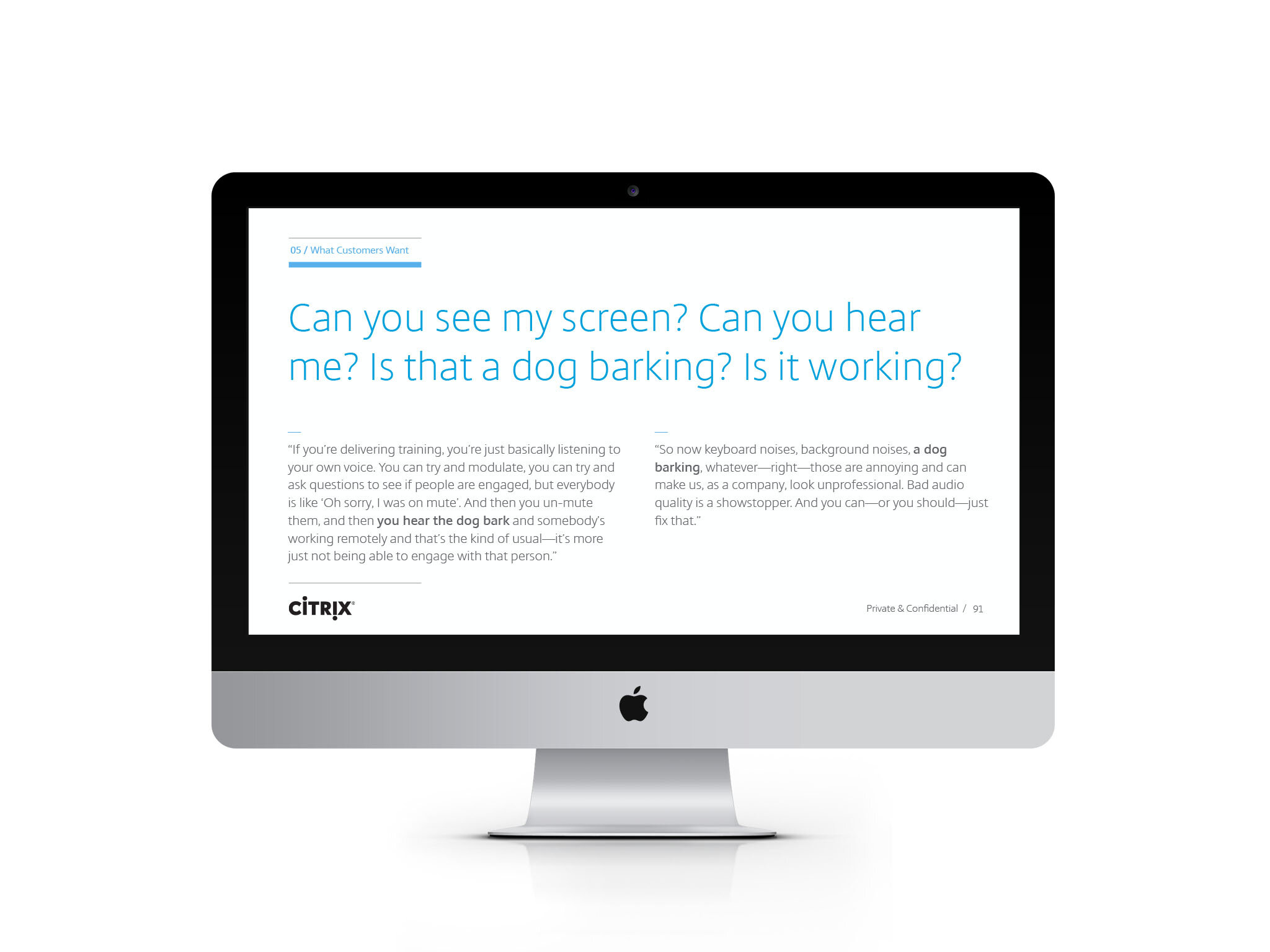
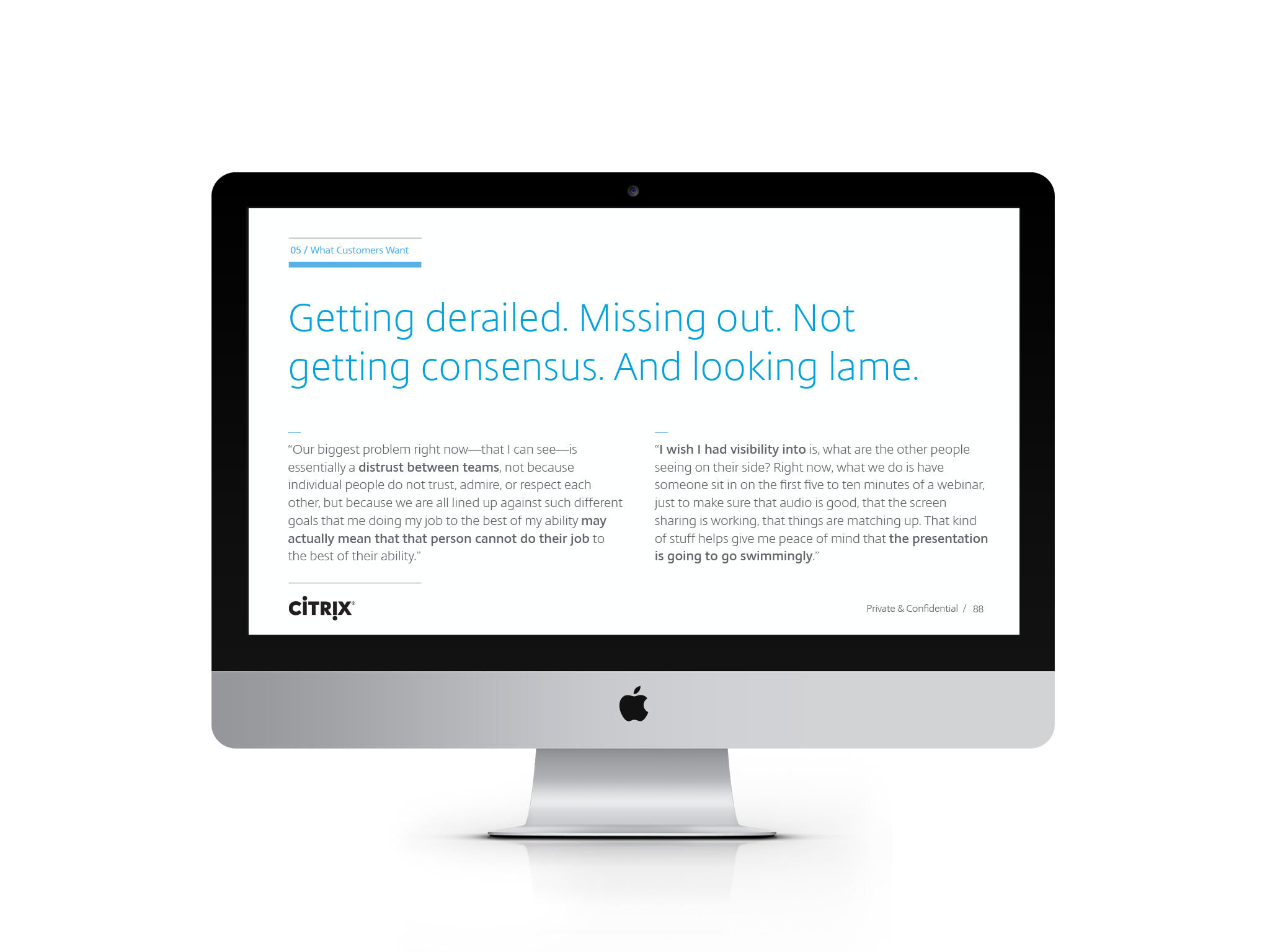
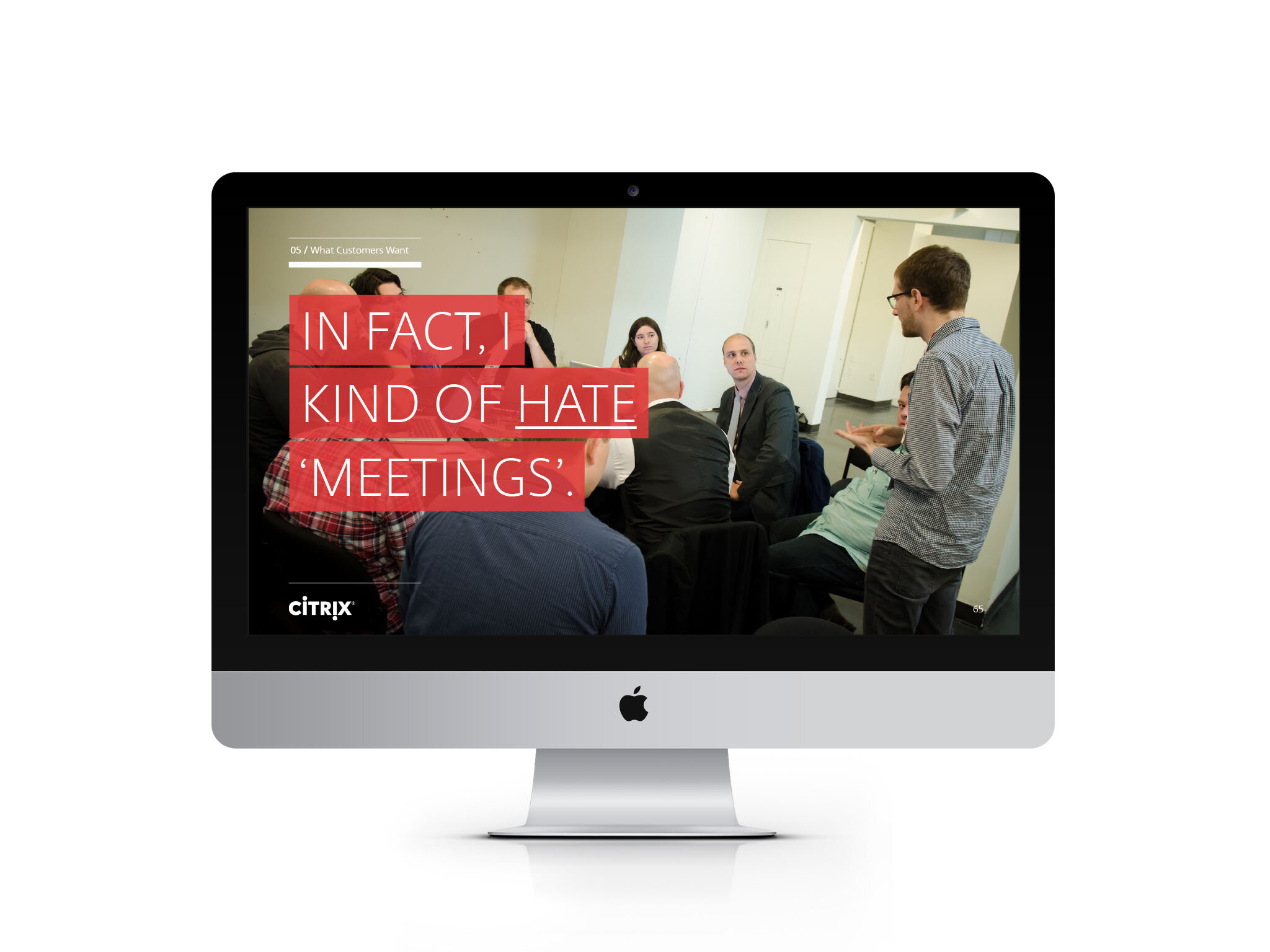
People just want to be good at their job. They want to work well with others and get shit done. They want to feel good about themselves. They want stuff that just works—stuff that helps them be understood. They want to be grokked, not blocked. Instead of adding more bells and whistles to people’s work lives, Citrix needed to get out of the way.
“You guys have a great capacity for teasing out subtle emotional nuance, particularly from organizations and teams. And you do a great job of understanding the currents and threads that motivate and drive groups of people toward collective action. You bring out the emotional resonances behind or within the data. That’s a very powerful thing. You guys make people believe. And that’s not so easy. It’s been really powerful for me.”
Chris Battles, VP of Engineering, Products & Platform
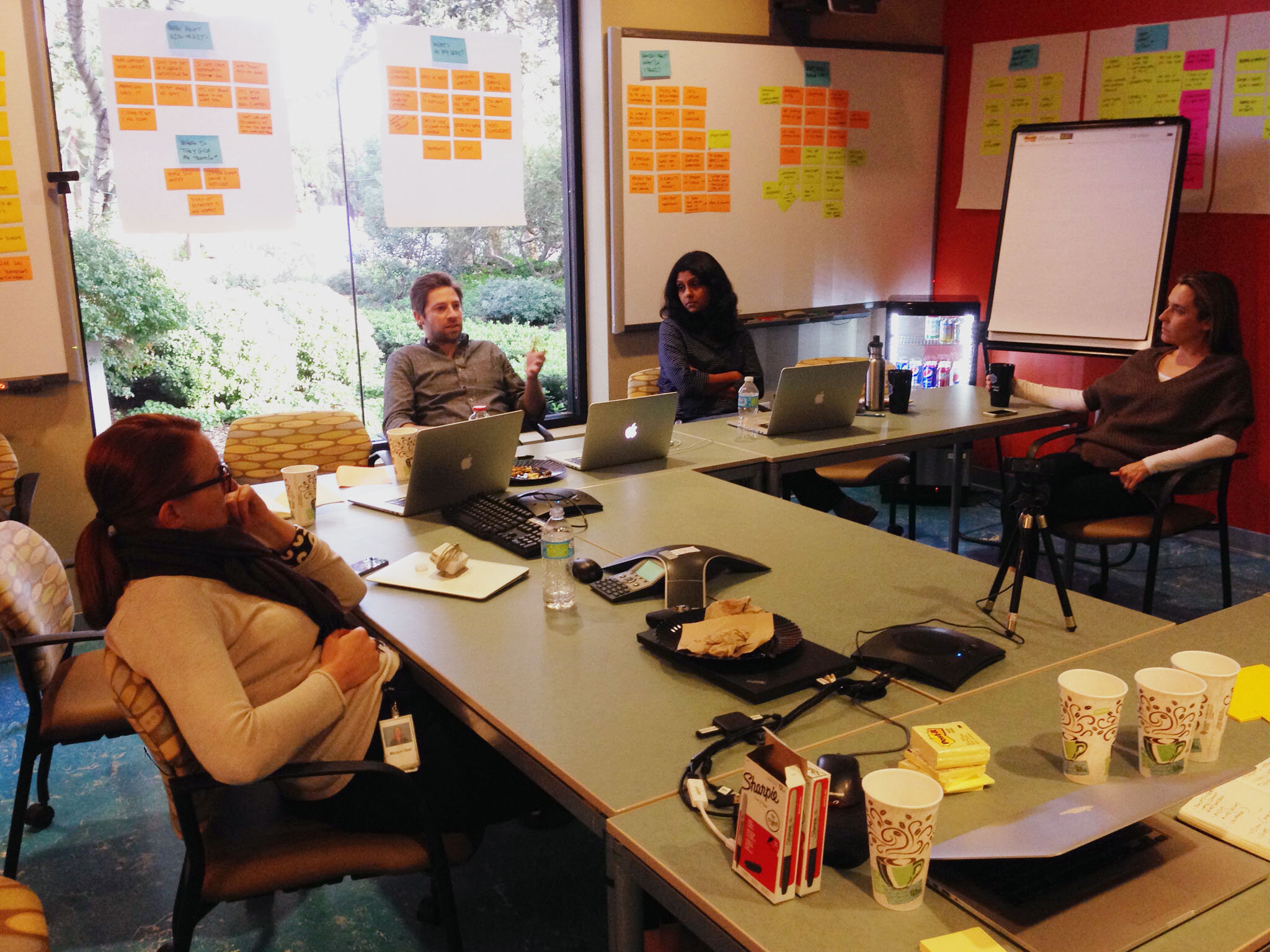
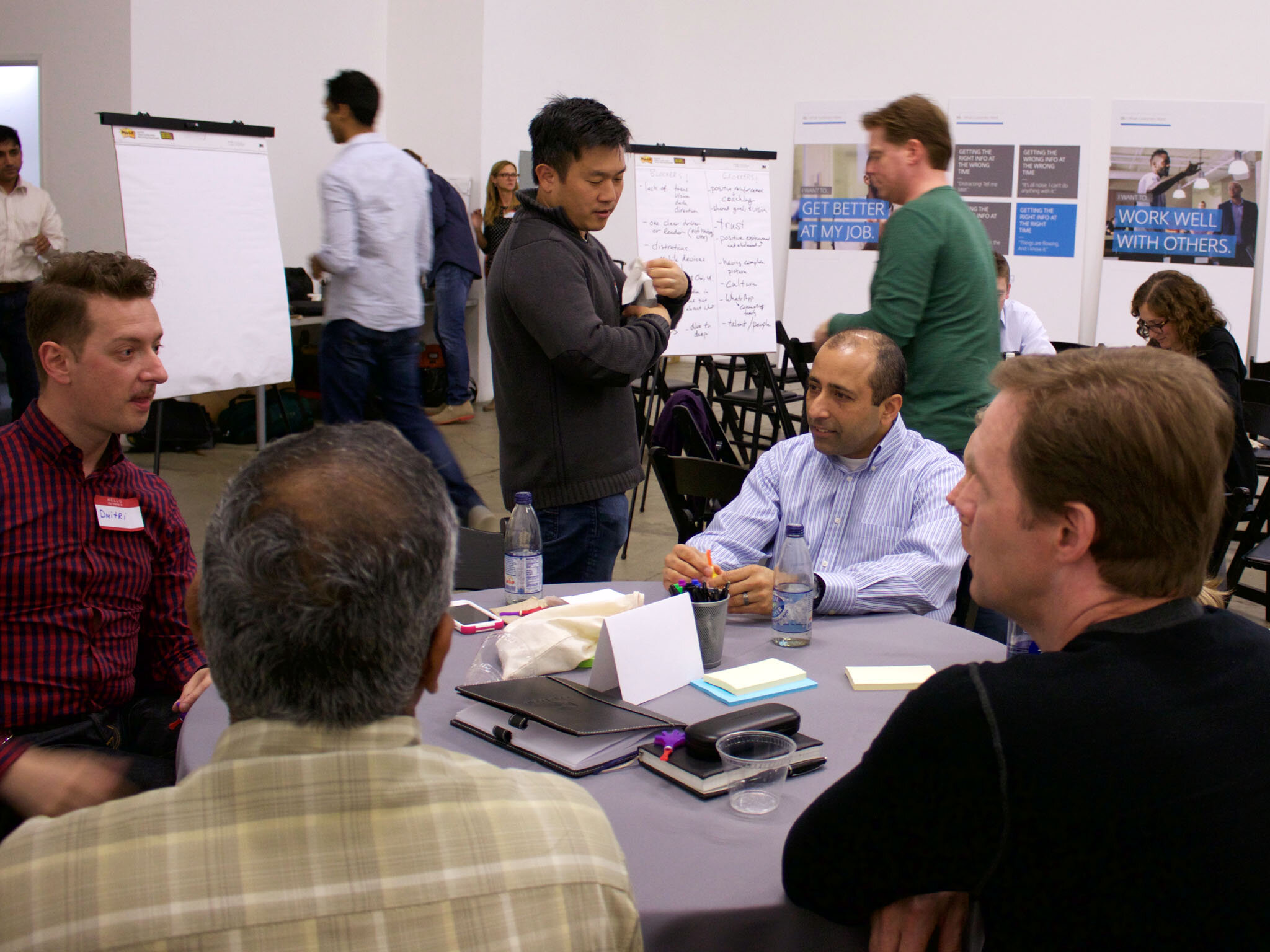
The Work
—
With a team this deep in the details, we needed to shake people up.
Once we sifted through our findings and built a narrative around them with the core team, we broadened the engagement to include around 30 additional players from across the organization. Over two day-long offsite workshops, we broke the group into five cross-functional teams and began exploring what Citrix would look like if their larger purpose was to actually help people be understood. Not personalize their meeting room. Not video chat in HD. Just get grokked. Anyway, it took a bit of doing to get them out of their comfort zone (freaking out about audio quality or mapping virtual whiteboards into video conference windows). But before long, we’d helped them codify ten commandments that could drive everything they did as a company—from ‘Thou shalt kill products, features, and processes that don’t perform’ to ‘Thou shalt add value to work AND life.”
Then we chiseled those down to five core principles that, with a little unpacking from the team, could tangibly inform everything from product experience to org design. We helped them translate those principles into a concrete course of action. And we began a process for creating real accountability internally. We walked the horse to water, basically. A really talented, engaged, multi-billion dollar horse, that is.
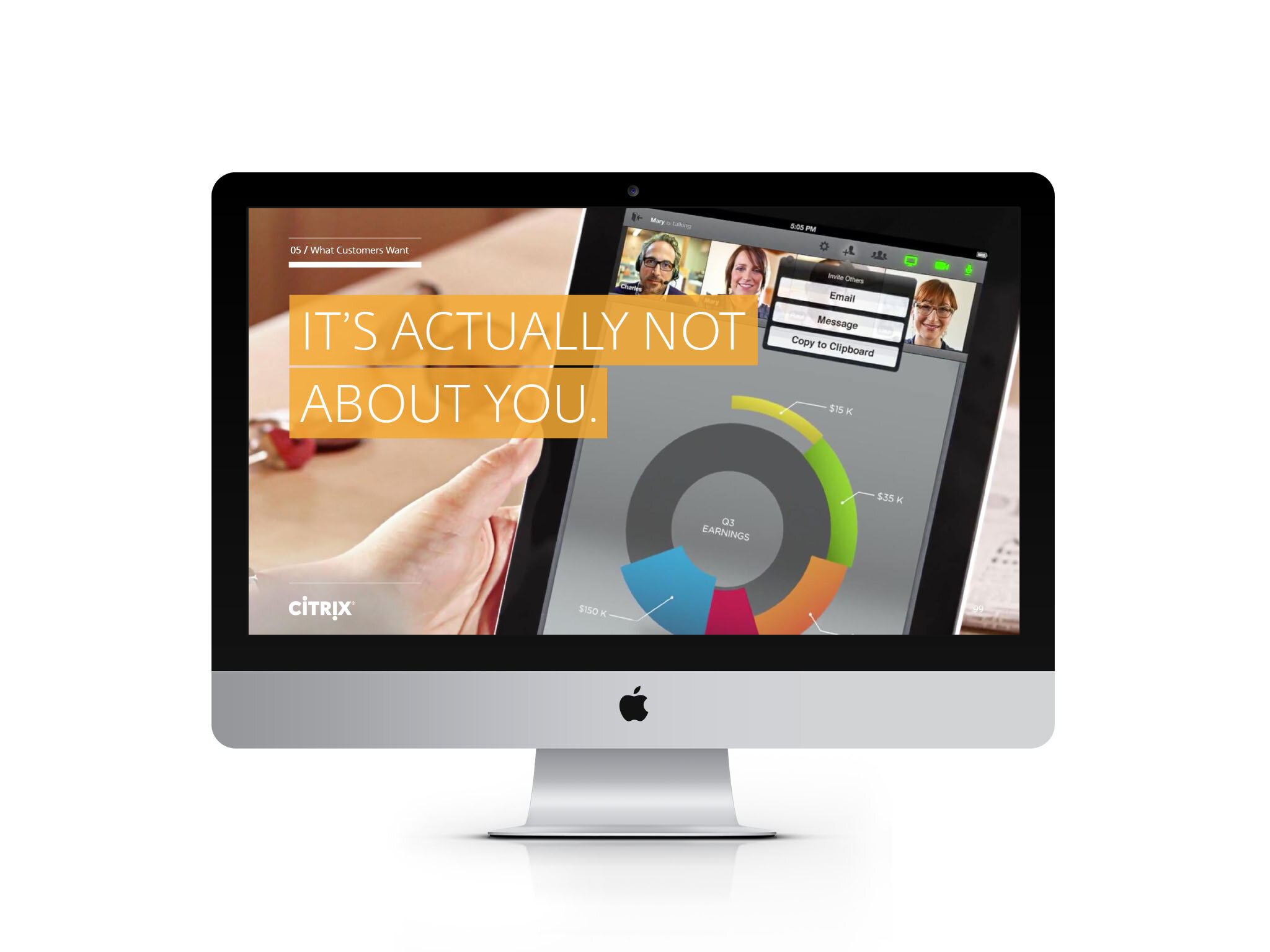



The Ending
—
The future looks bright (and sounds even better).
At the beginning we saw a slightly disheartened group of people tired of banging their heads against the wall. At the end we had an impassioned gathering of doers from across the organization agreeing on 5 principles of action. They’re aiming now for the best experience, not just the best technology. They’re committed to getting to know real users, and picking the one thing they need to build for them—and nailing it. They’ve started rebuilding their collective muscle memory for creating elegant, intuitive experiences. And they’re relearning how and when to say no. Which, when you think about it, is really the only first step toward making good on your promises at every touchpoint. They’re trying big things. They’re trying little things. They’re trusting hunches. And learning by doing.
And now they’re free agents too, having spun out of Citrix. Feels good seeing things come to fruition.
What We Did
